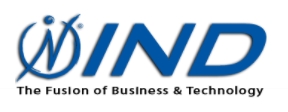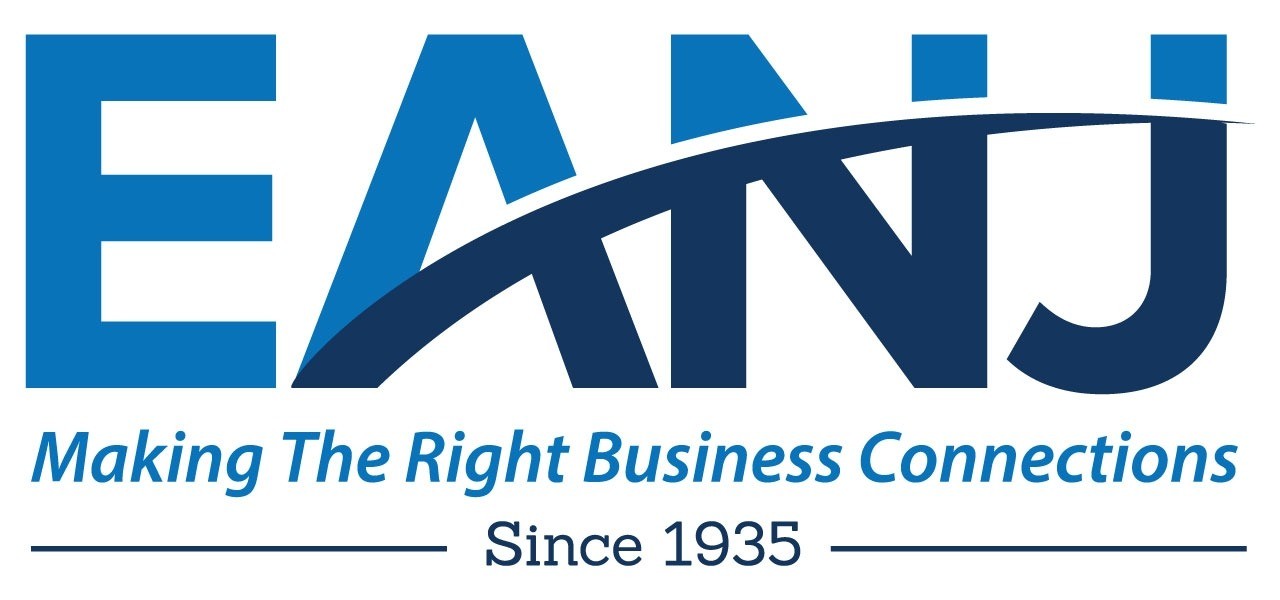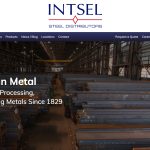The Executives Association of New Jersey
“Why isn’t my membership to the Executives Association helping my bottom line in the way I thought it would”?
Written by: Robert McCarthy, Heuer & Company
The current EANJ effectiveness committee was formed in part to address that question and if we’re honest it’s probably been asked by many EANJ members since its inception in 1935. There is no one answer because the reasons are as varied as our members; but because it remains a relevant question for some today it demands our attention.
First off let’s be clear that we are a group of highly motivated entrepreneurs with high standards and worthy aspirations. As such, we can’t help but be disappointed from time to time. Disappointment always stems from some unmet expectation that we ourselves created in a world we have little control over. Being the resourceful and adept individuals that we are, we are far more likely to forge on despite our disappointments and perceived setbacks because that’s what we do, that’s what we know. But we need to be careful that we don’t become complacent in our efforts.
So we as the “effectiveness” committee began to identify where the group was having trouble so we could make improvements that would benefit us as individuals and the membership. With good intentions and a desire to do a good job we began by setting our sights on working with the members who weren’t actively engaged, who weren’t making the effort to meet with fellow and new members, who weren’t leveraging their existing outside relationships for the benefit of others, who were falling behind on their goals, who demonstrated a lack of follow through and so on and so on.
We recognized that in order to have an effective group we simply needed effective members. How easy it was for us then to pick off the weak ones and to be critical of others outside of the committee! That process was important and perhaps necessary in that some changes were made, attitudes began to shift and we believe that modest improvements have resulted. But the process revealed something even more important. Each time we peeled back the layers on an issue we found that at the heart of all of our successes was an example of the sincere willingness of someone to give of oneself. It was a willingness that went beyond simply sharing a lead, making a quick introduction or just attending meetings to get some “points”. It was the willingness to give of our most precious gift and our most valuable resource; our time.
In discovering this truth we slowly began to shift our focus from others to ourselves. In doing so we began to see our own individual shortcomings, the missed opportunities and our own unwillingness to share of our time for the benefit of others. We could list the petty reasons why we hadn’t but struggled with any real excuses. So just as we adjusted our focus and our own attitudes for the betterment of the group we at the effectiveness committee ask that you too look inward and ask yourself if you’ve been generous with your time in the direct service of others more than being concerned about the return on that investment. It can be a hard concept to embrace; especially in our fast paced culture. (Read the Go Giver). We have no delusions that significant changes in attitude and perceptions occur overnight but feel strongly that collectively we should be bold and strive to simply give more without keeping score and to trust that it’s in the giving that we better our relationships and our bottom lines.
To put all of this in stark contrast really imagine for a moment the following two scenarios:
1. Imagine weekly EANJ meetings where every single one of us came with expectations of only receiving leads and introductions with the attitude that because we got up early, dressed right, paid our dues and made the effort to attend we were going to leave with so much from so many friends and colleagues.
2. Now imagine weekly EANJ meetings where every single one of us came really prepared. Prepared to specifically connect with at least one member on something good for them. To come ready to listen with a sincere desire to assist others. To come with a willingness to be generous with our time beyond the meeting in helping the many friends and colleagues without direct expectations of an immediate return.
Clearly we all know which of the two meetings we’d prefer to attend and which one would yield the best results for all. So the one (maybe two) important question(s) we leave you with for now are; are you willing to be a generous contributor? If so, how can we help you in your efforts to be that truly effective member?
What to Look for in an Assisted Living
Don’t let elaborate chandeliers and fancy décor fool you when choosing an assisted living community for your senior loved one. Of course, a pleasant and nurturing environment is important, but there is so much more to consider when looking at assisted living facilities. Having an understanding of specific things to look for and knowing what questions to ask are vitally important. Doing your homework prior to even making an appointment to tour a facility can help you to avoid making the wrong choice.
Care for Today and for the Future
The most important aspect when looking for an assisted living facility is the provision of care. It is not only important to make sure that the proper level of care is offered upon move-in, but to check that increasing levels of care can be provided for down the road. One of the most disappointing things to hear from a care facility would be that your loved one has to move out because their care needs cannot be met any longer. It is important to know if all care needs can be met not only today, but well into the future. It would not be a desirable outcome to get settled, make new friends and gain a sense of comfort and peace to only be told that their needs can no longer be met and that other accommodations must be made.
Happy, Engaged and Stimulated
After you have discovered the appropriate level of care can be provided throughout the entire stay, turn your attention to the activities program. Look at the calendar and ask plenty of questions about the frequency of activities being offered, the types of programs and the satisfaction level of those participating. When visiting, check to see if the residents look happy, engaged and stimulated. A good activities program will promote socialization and prevent isolation. This helps put your loved one at ease, ensuring that they will not miss out on a moment of their favorite hobbies or interests. We recommend that you make an appointment to tour a facility at the same time as your loved one’s favorite activity is being offered. Having the comfort of knowing this activity is scheduled could make this important decision just a little easier to make.
Do your homework in advance, and check out all of the possibilities on your own first. Then take your loved one to see just the few options you have narrowed down. This will minimize confusion as well as decrease their feelings of being overwhelmed. As a caregiver or responsible party, weed through all the choices, then only present what you feel is the best options.
When making this life changing choice, knowing what to look for when picking an assisted living facility is key. Being well prepared with the right questions and arming you with all the right knowledge will make this decision quick and easy. Remember, the most important things to consider are varying levels of care to ensure all needs will be met throughout the stay and an enriching activities program that will provide ample opportunity for socialization, personal growth and self-expression.
Dina Frauwirth
Adult Care Advisors
732-792-6407
Being Prepared Is Not Just For The Boy Scouts
 The phrase “longterm power outage” has taken on a new meaning since Hurricane Sandy and Irene swept through the state. Building Managers that lost power for a day or two considered themselves “Lucky”. Increasing electric demand on an overloaded power grid and hundred year storms that come every year have made generators as necessary as air conditioning.
The phrase “longterm power outage” has taken on a new meaning since Hurricane Sandy and Irene swept through the state. Building Managers that lost power for a day or two considered themselves “Lucky”. Increasing electric demand on an overloaded power grid and hundred year storms that come every year have made generators as necessary as air conditioning.
“Essential circuits” is another term that has taken on a new meaning. In the past, an elevator, fire panel and common area lighting would suffice. Today, having the means to power a server room and a router for connectivity can mean the difference between losing days of work verses the ability to work from home.
There are three levels of back up power that can be adapted to each specific need. The first would be a whole building generator. The limiting factor is that they can be cost prohibitive and very large in size. These are usually diesel powered. With this type of generator you should establish a relationship with a reliable vendor that can supply fuel consistently in the aftermath of a storm. Knowing the run time on a tank of fuel is key information. The obvious benefit is total power during an outage. An Automatic Transfer Switch (ATS) will start the generator and transfer the power back on within 8 seconds. This is a very attractive feature to a perspective tenant. During the engineering phase, the difference in cost between a whole building and partial building generator should be weighed against the cost of labor to separate the power in order to decrease the generator size.
The second and most common option is to designate essential circuits and centrally locate them into emergency panels fed through one or more ATS units. This significantly reduces the size and cost of the generator and can possibly allow the use of natural gas as a fuel source. In addition to the standard essential circuits, managers should have a command post powered up with computers, phones and a kitchenette for engineers to stay onsite longterm. Common area receptacles and lighting should be included so that clean up can begin right away. Fitness centers can provide personnel the opportunity to shower when they might not have hot water at home. One lesson learned from Sandy and Irene, was that backing up cafeteria refrigeration can not only save thousands, but will eliminate the task of discarding food during a time when your staff is already taxed. The major benefit of this is not having a dumpster full of rotting food on your property in August.
The third level of power loss protection does not even involve owning a generator. Buildings can be set up with a tap box, which is essentially a giant plug, and a manual transfer switch that will allow quick and easy connection of a portable generator to your building. Rental companies have set up priority lists which you can join for a fee. They will know in advance the size and voltage of the generator you will require including the drop off location and and power cord lengths. This can save days of down time spent calculating size and connection method before beginning the search for a generator along with everyone else. Even without the installation of the tap box knowing this information in advance can save valuable time.
Not all power failures are storm related. Failure of incoming service feeders is a common occurrence and can leave a building without power for days. Often times it is the responsibility of the owner to repair or replace these cables. Compromised underground conduits require excavation and utility coordination. This can happen at anytime and without warning.
Though it may seem that a generator install does not provide an ROI, there is a savings associated with eliminating the need and maintenance of battery powered exit and emergency lights. The un-tangable benefit would be tenant retention and an attractive leasing feature to your building. There is a great feeling of comfort sitting in your well lite office conducting business while looking out the window at a sea of dark buildings.
Joseph Spinella Lic# 9468
President
Spinella Electrical Contracting Inc
Twenty Two Years of Excellence
Should you sit or stand to work?
 The sit-stand revolution is all the rage. Companies across America are getting more and more requests for desks that have “sit-stand technology.” Sit-stand technology gives the worker the ability to raise or lower their desk to sitting or standing height depending on their preference. The question is; is there a health benefit, and should your company consider offering it?
The sit-stand revolution is all the rage. Companies across America are getting more and more requests for desks that have “sit-stand technology.” Sit-stand technology gives the worker the ability to raise or lower their desk to sitting or standing height depending on their preference. The question is; is there a health benefit, and should your company consider offering it?
Researchers found that sitting for lengthy periods of time has proven to be unhealthy, causing conditions like blood clots, diabetes, and heart disease over time. As soon as you sit down, muscles contract, calorie burning slows, and heart rate decreases. The general idea behind sit-stand desks is that the employee spends more time standing, therefore, expending more energy during the day. One strategy to consider to reduce the amount of time spent sitting is to place printers in locations where employees must leave their desk to retrieve documents. Another strategy is to utilize treadmill desks. However, treadmill desks bring their own hazards with the concept of doing two things at the same time, which requires the utmost focus on the task of working and walking without tripping!
There are different ways to add the sit-stand option to existing offices. An option to consider is to replace the existing desk with a new one. There are various models available ranging from electronic raising and lowering capabilities, pre-set capacities for multiple users at one location, hydraulic switching for manual raising or lowering, and a manual crank (which realistically will be used the first week but after that for the employee to exert energy to raise and lower the surface will lose its appeal quickly and the desk will remain in the “seated” position.) There are also options that allow the existing desk to be used with a platform that gets added on top. This platform is raised or lowered as needed. If adding a platform, various functions need to be considered to determine the best solution, such as multiple monitor use, an area for paperwork, keyboard, and mouse.
While research has discovered that there is not a lot of evidence that there is longterm health benefits by using sit-stand technology (March 2016 the Cochrane Library) it is agreed that by counteracting the side effects of sitting for lengthy periods of time does have beneficial effects. Another alternative is to set an hourly timer to remind yourself to get up and move. Walking or standing for 10 minutes every hour may help counteract the harmful side effects of long term sitting like obesity, diabetes, and heart disease.
In the long run, if you feel more productive and fit by using a sit-stand work environment, then cheers to your health!
Caroline Shelly, CID, LEED-AP+BD-C
HF Planners, LLC
10 Johnson Drive Raritan, NJ 08869
Phone: 908-393-9984 x 301
[email protected]
PAID SICK LEAVE IS HERE TO STAY
 The city of Elizabeth recently became the tenth New Jersey municipality to require paid sick leave for employees.
The city of Elizabeth recently became the tenth New Jersey municipality to require paid sick leave for employees.
In September of 2013 Jersey City became the first city in New Jersey to approve a municipal ordinance requiring its locally based business owners to provide employees with paid sick time.
The Jersey City law went into effect in January of 2014 and since then 9 other towns in New Jersey have passed similar laws. They include Bloomfield, East Orange, Irvington, Montclair, Newark, Paterson, Trenton and, most recently, Elizabeth whose law took effect on March 2, 2016.
The laws, which are generally similar in nature, require employers of all sizes to provide sick leave. While there are exceptions, generally speaking employees working for employers with 10 or more employees accrue paid sick leave, while those employed by companies with less than 10 employees are entitled to unpaid sick leave. Jersey City, however, recently expanded its ordinance so that even companies with less than 10 employees must now provide employees with a combination of paid and unpaid sick leave.
At the same time that cities and towns in New Jersey are passing laws of their own, the state legislature also has the subject of paid sick leave under consideration. A bill was introduced in the assembly but has so far not progressed beyond committee. Some employers view this favorably, while others who see paid sick leave as an eventual reality say they would prefer one uniform state law to the hodge podge of local ordinances that is developing and which not only affects locally owned businesses, but employers located outside of the municipality. Thus, for example, the Jersey City ordinance provides coverage
to “Employees who work in Jersey City for at least eighty (80) hours in a calendar year.” Under this scenario a company based in Morristown (which does not have a paid sick leave law) but which sends employees to work in Jersey City on a regular or even semi-regular basis, must maintain time records that will comply with the Jersey City ordinance. This would be in addition to the time keeping requirements required by state and federal law. As with other state and federal wage and hour laws, it is the employer’s responsibility to maintain adequate time and attendance records.
All of the municipal ordinances in question contain many provisions beyond just who is covered and for how many hours. These include how sick time is accrued, when it begins to accrue, what can it be used for, whether it carries over into the next year, and employee rights upon termination, to name a few. Employers in affected municipalities should be certain to review the laws and take steps to ensure compliance with their requirements.
Lawrence Z. Kotler, Esq.
Partner
Carlin & Ward, P.C.
Telephone: (973) 377-3350
Cell Phone: (201) 602-6918
Basements / Lifestyle
 We seem to be making basements a lifestyle of today. They are no longer a place to send the kids. They have bars, media rooms/home theaters, full bathrooms with steam, exercise area, storage area and of course play areas for the children and don’t forget poker, pool tables, oops wine rooms!
We seem to be making basements a lifestyle of today. They are no longer a place to send the kids. They have bars, media rooms/home theaters, full bathrooms with steam, exercise area, storage area and of course play areas for the children and don’t forget poker, pool tables, oops wine rooms!
We don’t look at how many enclosed spaces we can make, but how much of an open feel can we create, while allocating for the functional areas. We conceal lolly columns or remove them with integrated steel beams. We can create angles, a mixture of flooring, i.e. hardwood, stone and carpet. Wonderful colors and a mixture of textures, patterns, woods and metals. Some basements do not have high ceilings so we try to raise in areas where possible to give interest and a sense of height. Coffers work well in some cases – definitely crown moldings (even if there is a dropped-in acoustical ceiling) it really gives scale and good bones.
When you are in the basement lighting is very important. Let’s not do the typical grid of recessed lighting. Yikes! Mix it up with sconces, surface mounted fixtures and directional recessed lighting. We want interesting space well lite. What we want most if you go down to the basement you say “Oh my God it doesn’t feel like I am in a basement.” That means it met the criteria and it is a job well done.
Enjoy your new living space.
Gail Whiting
Design Consultants
Bedminster, NJ 07921-0252
How to Avoid Common IT Investment Mistakes
 Before you invest your time and money into a new IT system for your business, you can maximize your investment of time, talent and dollars by avoiding these common IT investment pitfalls.
Before you invest your time and money into a new IT system for your business, you can maximize your investment of time, talent and dollars by avoiding these common IT investment pitfalls.
No plan and no budget. Every business needs a technology roadmap to guide its investments, and to ensure that your IT systems support your business goals.
Your plan should include clearly defined business goals and what types of technologies will be needed to meet those goals. Talk to your employees about what roadblocks they face in their daily work and in reaching your goals. Evaluate how your company may change and grow in the future.
Next, develop a list of the specific IT systems that could be used to meet your goals. List their pros, cons, and total cost of ownership over a two, three or even five-year period. This is especially critical for any Cloud system because those monthly fees can really add up over time. It’s also critical to ensure that you understand how a new system will integrate with your current IT systems.
Finally, take the time for product demonstrations – and to use the product if you can, even for a short while – as well as speak with references.
Newest is not always the best. Everyone loves those new shiny gizmo’s, right? There are so many new options on the market right now—with a continually expanding list of Cloud, mobile, and on-site solutions.
It’s vital that you avoid the temptation to go after the newest technology rather than the technology that best fits your company’s needs. New technologies, while fun and interesting, are also untested and are much more prone to security issues than established, main-market systems.
Using old systems for too long. It’s a common misconception that using the technology that you already have costs less than investing in modern, main-market technology, even if your existing IT systems are 5+ years old.
Why is this a misconception? Think about the time your employees waste using old computers or antiquated systems: the older the computer, the long it takes your employee to use it. Every task takes longer, from starting the computer to using programs on it. Old computers also are more prone to hardware failures, causing unplanned downtime. All of that wasted time – and your money – is compounded by the number of employees who are forced to work on old systems.
Here’s another way to think about it: Consider the average cost of your employees in relation to the cost of getting a new computer every three years for them. Don’t limit your employee’s productivity – and your profitability – with old IT systems.
Your team doesn’t need formal IT training or support. Even the most IT-savvy crew needs training and support when new systems are put into place. Why risk your IT investment and hope that when questions arise and something goes wrong, your employees will know what to do?
Employee training should be part of any new IT implementation, and timely support from experienced IT professionals is key to keeping your employees productive and your business profitable.
Most businesses with more than 10 employees are best served by a fixed-cost IT support and consulting service. A good fixed-cost IT support firm acts like an insurance plan for your business – no matter how much time is needed to take care of your IT assets and employees, it’s all included in the fixed monthly fee.
A good IT partner will be able to help you with selecting and implementing the IT systems that are the best fit for your business, and will also perform pro-active maintenance for your systems to ensure they run as smooth as possible for years to come, maximizing your ROI – and your bottom line.
Eric Speidel
IND Corp.
Website: www.INDCorp.com
Phone: 800-621-9774
President and CEO
Rin Robyn Pools®
908-766-5759
Since 1958
Design, Consulting, Construction
Retail
Service
Renovations
Whether you like your music served up Old School or New Cool, PAC’s Ralph Tarnofsky discusses how to get the very best sound:
There are two current sources of high performance music. Uncompressed digital music files and vinyl records. Which one is right for you? – Let’s explore some possibilities!
If your satisfied with your current sound system and turntable and you still have some great old records, I would suggest a resurrection! When a turntable ages (regardless of usage), it will require some basic maintenance, however it can quickly be put back into service spinning your vinyl collection.
Alternatively, if a competent turntable specialist inspects and recommends a new one, I would go that route. A new turntable of reasonable quality and performance level starts at only $450. While a higher end turntables sell for considerable more, even a base model will deliver sound quality that is more enjoyable than any other commonly available music source.
Today’s records are pressed with great precision on very thick and heavy vinyl meaning better sound and no warps. The condition that you keep your record collection will also have an impact on sound quality. Fortunately, there are now economically priced professional grade cleaning machines will restore the sound that may be getting lost underneath layers of dirt.
Should you choose to pursue the digital domain, you will ideally want to use only uncompressed digital music files. When music is compressed, it chops off the dynamic range of a recording. While this does save storage space on a hard drive, the subsequent fidelity is harsh and sterile. For a warmer, more lifelike sound stick to uncompressed music files which are now widely available for purchase and downloading in an ever-increasing variety of musical genres.
Once you have downloaded the music files onto your home computer, you can access them with a variety of audio components that are specifically designed to interface between your computer and your music system. A quality unit starts at around $1,000 and all of them offer the convenience of smart phones with apps that allow the user to access and control their newly acquired digital music library. These digital music interface components can either connect to your existing music system or replace it.
Either way you choose to go, the results will outperform most compact discs, satellite radio, and i-tunes. So get ready to start exploring and enjoying the joys of quality music and remember PAC is always here to lend a helping hand.
Sincerely,
Ralph T
PAC has been providing the finest in Audio, Custom Theater, and Automation Systems for homes and businesses for over 40 years. We utilize cutting edge technology to design and implement quality yet affordable solutions that will specifically address all of your A/V and “smart home” needs.
Current residential real estate closing procedure…..
The purchase and sale of residential real property expects to encounter a realtor who initiates an introduction of the parties and when appropriate prepares a sales contract when the parties are in agreement as to the major terms. Then the contract goes to a lawyer for each side who will review the terms and advise his client as to the application of the basic terms to their respective unique circumstance. The attorney may change the terms of the deal refining the arrangement to suit his client’s needs. After attorney review, the buyer is usually permitted to inspect the property by engaging a professional home inspector. Any deficiency can be adjusted between the buyer and seller or either party can terminate the transaction.
Once the contract is ready to proceed, the buyer seeks to satisfy a usual condition in his contract by obtaining a written mortgage loan commitment developed by the buyer’s chosen lender. The buyer’s attorney has commissioned a full search of any liens on the property or restrictions on the use of the property as well as any judgments which may have been recorded against the seller or the buyer. The buyer’s attorney relies on a title company to produce a search of all records affecting the title, the taxes or liens showing amounts due against the realty. They will paid off in full from sale proceeds at closing.
The lender issues a loan commitment and title company issues a title insurance commitment to insure title to the new owner and his lender. The town is asked to inspect the premises and issue a certificate of occupancy showing that the required smoke and carbon dioxide detectors are in their proper place.
The attorneys, the title company, and the lender cooperate to produce a legally required closing disclosure statement which captures all transaction expenses for the parties and sets forth in straightforward language what is being charged and for what service and totals these expenses so that the buyer can see clearly what he is buying and at what expense. Efforts are made to remove all surprises from these transactions. The paperwork to secure the lender on its loan to the buyer as well as giving the title from the seller to the buyer are handled at the closing table. Money is passed and the keys are delivered. All open accounts are satisfied and closed. The process usually takes between 60 and 90 days once the contract is presented to the seller by a willing buyer. The single most important purchase in a person’s life involves the support and hard work of many services cooperating to get the transaction concluded.
A Professional Corporation for the Practice of Law
122 Washington Street
Morristown, NJ 07960-6814
Phone: 973-538-8565














